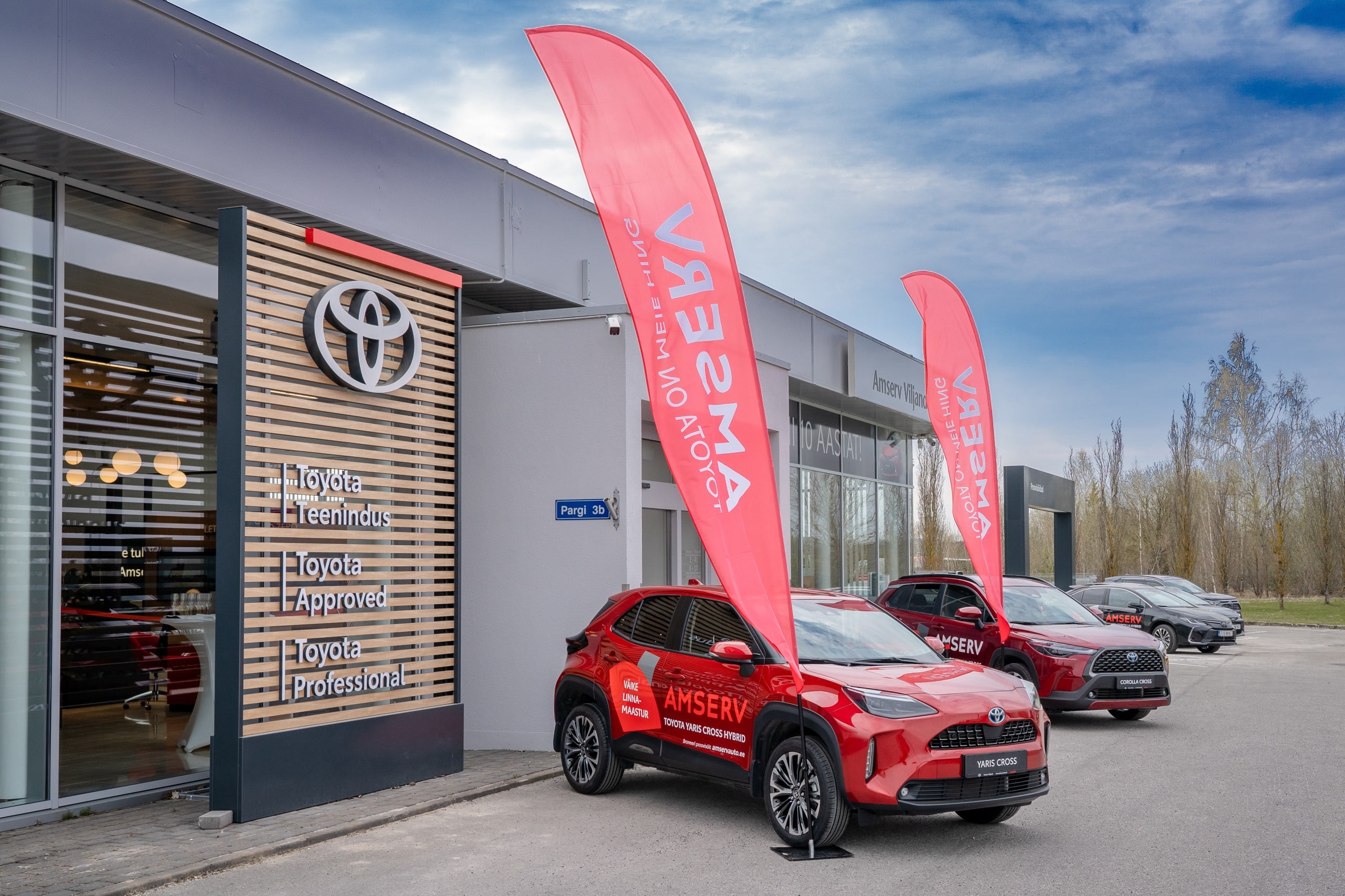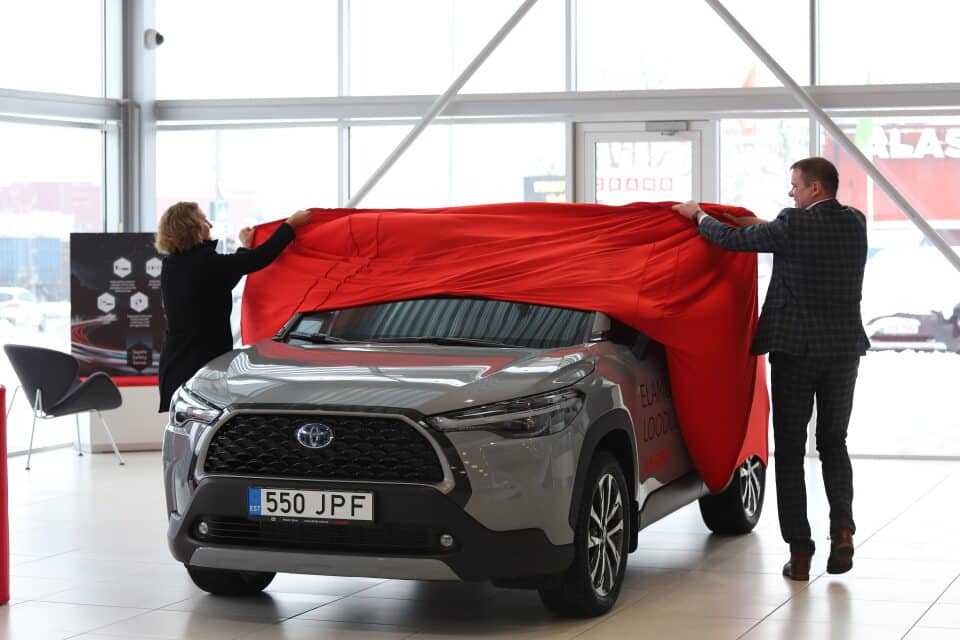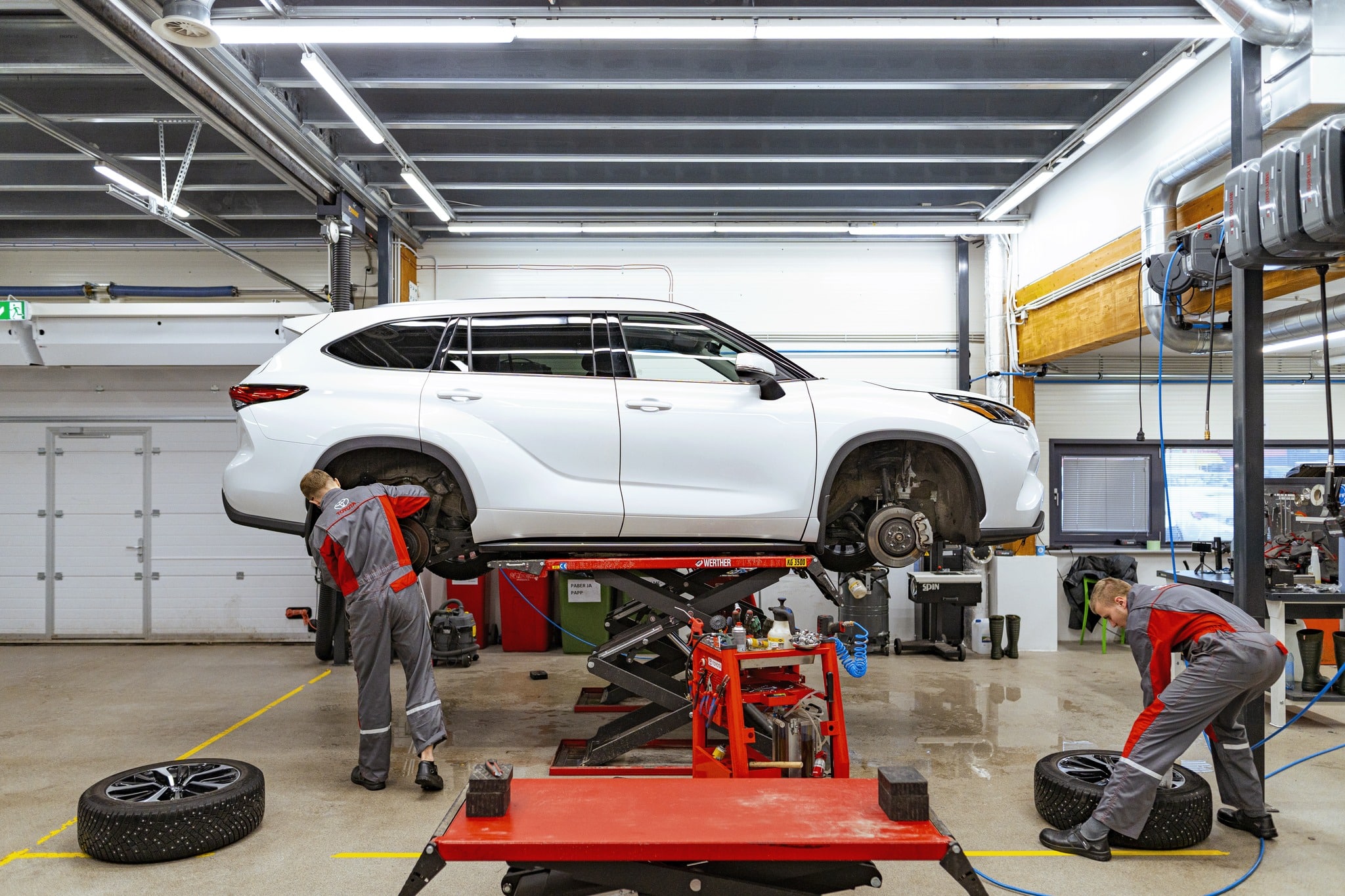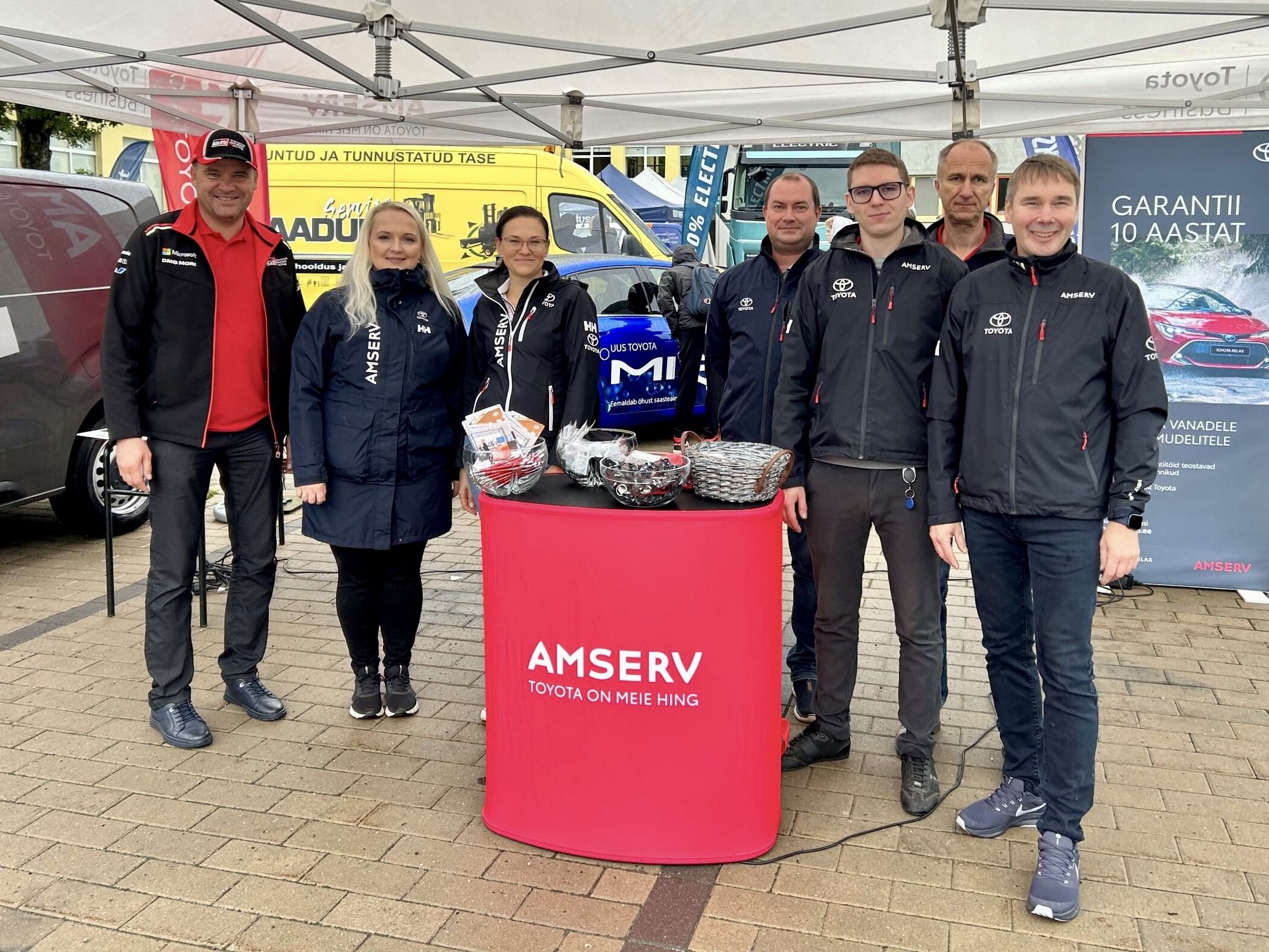We had a chat with Ahti Aasala, a car after-sales manager at Amserv, one of the leading car sales and service companies in the Baltic region. He has been working at Amserv for over 20 years. Ahti has worn many hats during his career, including working hands-on with cars, serving as an auto electrician, managing spare parts sales, gaining diverse leadership experiences, and overseeing dealership operations. He truly stands out as a skilled expert in his field.
We discussed how the company has changed during his time and what has kept him there. Ahti explained why Toyota and Lexus are great brands to work with and why Amserv has decided to do so. Lastly, we dove deeper into why the maintenance of electric cars often proves to be more cost-effective compared to traditional combustion engine vehicles.
What do you do at Amserv, and what does your typical workday look like?
In the group, there are 6 dealerships in Estonia and 3 in Latvia. Anything related to after-sales service, whether it’s spare parts sales, maintenance, body painting, technical inspections, or anything that happens with the car after it’s sold, I’m involved in. I also deal with insurance matters as the product manager for insurance sales. In Amserv we offer a complete service so our clients do not have to search for additional things elsewhere.
I have various roles, and every day is different. For example, yesterday, I attended a career fair for students in Tartu. Various car brands were represented there. It required me to assemble a team and figure out what would appeal to students. We organized a Kahoot! game for them. We believe that interactive activities are much more effective for introducing the brand and the company. Just giving a presentation usually doesn’t leave a lasting impression on anyone. It’s important to reach young people through their phones – they learn more and remember more that way.

I also visit Latvia once or twice a month. Sometimes I stay for several days because one of our dealerships is near the Lithuanian border, and that’s a longer trip.
We often brainstorm internally about how to improve and offer better services to our customers. Amserv is a company owned by Estonians, and that’s a great value because the owners understand the local market, and they really care about their people. Our corporate culture is respectful and caring, we support and help each other, and this is immediately reflected in our customers.
You’ve been working at Amserv for over 20 years; what has made this work interesting for you?
I fulfill various roles in my job, so it never gets boring. We have multiple dealerships and a broader vision. Finding commonalities and implementing best practices from one dealership to another is my responsibility. It’s about standardization. When a process works well, it should be standardized to maintain consistent quality.

Certainly, there are requirements from importers that must be met. In Estonia, we represent the Toyota and Lexus brands. In Latvia, we also have Peugeot and Opel. The focus is mainly on Toyota and Lexus. They are strong importers, and that’s a value in itself because they provide many frameworks that ensure quality. My role is to ensure that we offer the same quality in all of our dealerships. And to come up with ideas to attract customers to Amserv. In both Estonia and Latvia, the market isn’t divided among too many companies. But competition is good because it drives progress. It forces us to make an effort and find ways to capture the customer’s attention.
What are some significant changes that have occurred in Amserv over the years?
At some point, we thought it was a good idea to have a full scale car dealership and work with many different brands. It took us a while to realize that it’s not that simple. The support and information provided by importers varies significantly. If the importer is weak, it restrains the business. That’s why today we focus more on Toyota and Lexus because they are strong partners. Good information exchange is ensured, and this shows to customers that things are in order. It provides clarity and trust, ensuring that you get a certain price and quality. We actually started with Toyota, and now we’ve come back to Toyota.
Do you personally drive a Toyota or Lexus?
We have hybrids from both brands in the family. You must have faith in your products. It’s difficult to sell things that you have doubts about; brand loyalty must be there.
There’s a sentence on your website: “Nothing is so good that it cannot be made better. That’s why we constantly strive to improve everything.” What do you think could be improved in the current Amserv after-sales service?
That’s an extended idea from Toyota, and it’s described by the term “kaizen,” which comes from Japanese philosophy. It means going to the detail level and looking for ways to do things even better. How to get even closer to the customer. Digitally, it’s possible to be in a customer’s pocket, for example, through apps. We have such solutions for Toyota and Lexus. The whole society is moving towards making things more digital and convenient. The points where customers can reach out to us must be easily accessible. All kinds of bookings should be easy to find.
On more specific topics, the possibility of online check-in, like the one used in hotels, could be implemented in the automotive industry. As a customer, you can pre-book and confirm your services, saving time on-site. This aspect should be made more digital.

When making additional sales and offers, sales people often forget certain things. But if this process is made digital, and personalized products are offered based on the customer’s profile, it would solve this problem as computers don’t forget. But the digital aspect and human contact must go hand in hand. The option to consult with a specialist must remain, even if it’s through a chat in the background. We have our own chat, with real specialists behind it. They handle around 250-300 cases per month. At Amserv, we understand that problems need to be solved outside of working hours, so bookings should be available 24/7.
Amserv focuses on Toyota and Lexus. Why are these good car brands?
Certainly, experience plays a role. But it’s also about having a strong importer. Having a partner for the brand who doesn’t keep information to themselves and willingly shares it is crucial. No brand is foolproof, and something can go wrong with any car, so having a reliable source for information is essential.

Let me give you an example. I’m on the board of the Union of Car Vocational Studies, an organization that conducts vocational exams in the automotive field. We collaborate with schools. Schools that have partnerships with a specific brand’s dealership produce stronger students. Those without such partnerships have to fend for themselves and seek that information from all over the internet. Information doesn’t naturally flow in. You have to put in a lot of effort yourself, and it’s challenging to distinguish important information from the unimportant. In reality, it’s good if that information is packaged in a training format.
So, having a good relationship with importers is highly valuable.
You also sell used cars from various other brands. Do you offer after-sale services for them as well?
Typically, when someone buys a new car, they often have another car they need to get rid of. We do buy cars back from customers. We conduct inspections and assess their condition. We offer services for other brands as well. Maintenance is not the primary service we provide because for maintenance, you need brand-specific diagnostic tools and equipment that only authorized dealerships usually have. You also need trained technicians who know how to properly service that particular brand. But we do offer technical inspections and body painting services for other brands. The same goes for windshield replacement, car wash, and tire work – all of these can be done. We also have a “fast service” where you can change light bulbs, wiper blades, and do minor repairs. Brand doesn’t matter for these services.
Let’s say a person has an old Audi at home and wants to trade it in for a new Toyota. What does this process look like at Amserv?
Sometimes an initial assessment is done based on the car’s data and pictures. But that’s a rough estimate. To agree on a price and take it into our inventory, we conduct a 50-point inspection on-site. Based on our checks, we offer the customer a price at which we’re willing to buy the car back. If any issues came up during the inspection, we make the necessary repairs before putting it back up for sale. That’s how the business works.
Cars are changed quite frequently. The average time a car is usually driven is about 3.5 years. Of course, there are differences, and some people drive cars for 10 years or more. Often, people take out 5-year leases, but they replace their cars much sooner; they don’t wait for the lease term to end. People tend to get tired of their cars faster. If the market value is higher than the lease value, the difference becomes a down payment for a new car.
We also purchase cars from outside of Estonia, such as from auctions. We also conduct personalized searches. When bringing a car from abroad, it’s essential to do a background check on the seller. We prefer working with authorized dealerships whenever possible. Buying from private individuals can raise various questions, from taxes to the condition of the vehicle.
In your experience, which car brand has the most expensive maintenance?
In terms of maintenance costs, Toyota is relatively affordable within its segment. Likewise, Lexus, in the premium segment, isn’t excessively expensive. Competition plays a significant role in setting prices; the number of providers in the market matters. Availability of spare parts is also a factor. Most regular car maintenance is either annual or mileage-based. Toyota typically has service intervals around 15,000 kilometers. Some brands may have intervals at 20,000 or 30,000 kilometers. Toyota, in collaboration with the PSA Group, has created the Proace van series, where some models have regular maintenance intervals of 50,000 kilometers.
What are the procedures that should be done with your car every year?
I believe it’s similar to taking care of a home. If you regularly maintain it and fix any small issues as they arise, the overall costs will be lower. If you let things pile up, it ultimately becomes more expensive. Car owners can do a lot for their wallets by properly maintaining their vehicles.

Currently, it’s essential to ensure that your tires have good traction on the road. The mindset of “summer is almost over, I’ll use my tires until they wear out” is not advisable because the slipperiest part of the year is still ahead. Falling leaves and rain make the roads slippery. It’s better to switch to all-season tires with good tread depth a bit earlier; it prevents more significant problems. The same goes for lights – if they don’t work, you won’t see well, and you won’t be visible to others.
What are the after-sales service differences for electric cars compared to combustion engine cars?
Wheels, tires, suspension, cooling and heating systems still require maintenance for electric cars. Just because you bought an electric car doesn’t mean there’s nothing to be done. However, it does raise a significant challenge: who can repair these cars today? There’s a great demand for diagnostic experts who understand electrical schematics and connections and can also work with computers. Training these people needs to become a priority. Electric car maintenance is generally less expensive; there are fewer consumables, like engine oil, to worry about. The electric motor also contributes to braking and energy regeneration, which means the brakes last longer, reducing their maintenance cost. Maintaining an electric car is definitely cheaper than a combustion car.
Toyota believes that pure electric vehicles are an interim step, and at some point, we will reach hydrogen vehicles (which Toyota also has). With hydrogen, there’s currently a legislative transportation issue that needs to be addressed in Estonia. Alexela is a partner in Estonia ready to build those refueling stations, and Utilitas is expected to provide the hydrogen. Currently, we have to refuel our Amserv hydrogen car (Toyota Mirai) in Riga, which is obviously inconvenient. However, to showcase future technology, we need to display this car. Usually, we transport it to and from Riga on a trailer because the car can travel 800 km on a single tank, and it’s not worth driving it from Tallinn to Riga and back to Tallinn.

